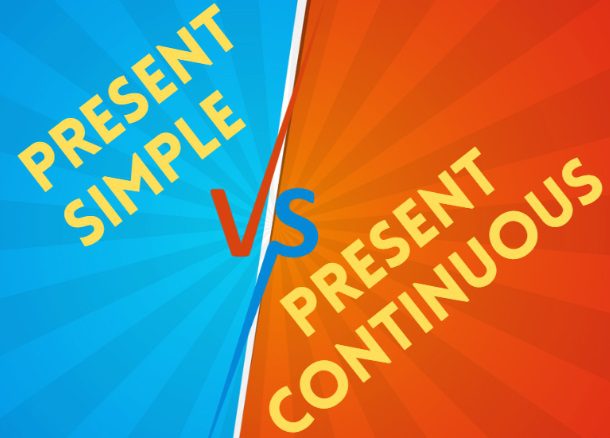Esta proposta de atividade de INGLÊS é destinada aos estudantes do 5º Período do Ensino Fundamental.

Simple Present Tense vs Present Continuous Tense
The simple present and present continuous are two tenses used in English to talk about actions and events that are happening in the present. Here’s an overview of the difference in use between these two tenses:
Simple Present: The simple present tense is used to describe actions or events that happen regularly, habitually, or as a general truth.
For example:
I walk to work every day.
She always brushes her teeth before going to bed.
Water boils at 100 degrees Celsius.
Present Continuous: The present continuous tense is used to describe actions or events that are happening right now, at the moment of speaking.
For example:
I am walking to work right now.
She is brushing her teeth at the moment.
The water is boiling on the stove.
In addition, the present continuous can also be used to describe actions or events that are planned or arranged for the future.
For example:
I am meeting my friend for lunch tomorrow.
They are traveling to Europe next month.
It’s important to note that the simple present can also be used to talk about the future in certain cases, such as in schedules or timetables.
For example:
The train departs at 8 AM tomorrow.
In general, the choice between the simple present and present continuous depends on the specific context and the intended meaning. If you want to talk about a habitual or regular action, use the simple present. If you want to talk about an action or event that is happening right now or is planned for the future, use the present continuous.
QUESTION 1
O tempo presente simples descreve
(A) coisas que acontecem com paixão
(B) coisas que estão acontecendo agora
(C) coisas que fazemos de alguma forma
(D) coisas que acontecem em algum momento
QUESTION 2
O tempo verbal que deve ser usado para descrever coisas que estão acontecendo no momento é o
(A) presente Simples
(B) presente Contínuo
(C) passado Perfeito
(D) futuro Perfeito
QUESTION 3
Como o texto distingue entre o tempo Presente Simples e o Presente Contínuo? Quais são alguns exemplos usados para ilustrar as diferenças entre os dois tempos verbais?
QUESTION 4
Por que você acha importante usar o tempo verbal correto ao escrever ou falar? Como o uso do tempo verbal errado pode afetar o significado de uma frase ou mensagem?
QUESTION 5
Na sua opinião, qual tempo verbal é mais adequado para descrever ações habituais, como escovar os dentes ou tomar café de manhã? Por quê?
QUESTION 6
Como o uso de diferentes tempos verbais pode afetar o tom ou o humor de um texto? Você consegue pensar em exemplos da literatura ou da poesia em que o uso de um tempo verbal específico tem um impacto significativo na mensagem ou tema geral?
| Autoria | Drª Profª Sueidy Ferreira Lourencio |
| Formação | Letras Português/Inglês – Doutorado em Educação |
| Componente Curricular | Língua Inglesa |
| Habilidades | (EF06LI19-A) Compreender e utilizar o presente simples e o presente contínuo nas formas afirmativa, negativa e interrogativa, em situações reais para indicar rotina, fatos, opiniões e ações em progresso. |
| Referências | BRUNI, Cristiana. English Adventure. 1. ed. v. 1. Harlow: Pearson Education Limited, 2017. MAKAR, Barbara W. Primary Phonics. 1. ed. Chicago: Modern Curriculum Press, 2018. KOUSTAFF, Lesley. Oxford Discover. 2. ed. v. 1. Oxford: Oxford University Press, 2018. KOUSTAFF, Lesley. Oxford Discover. 2. ed. v. 2. Oxford: Oxford University Press, 2018. |
